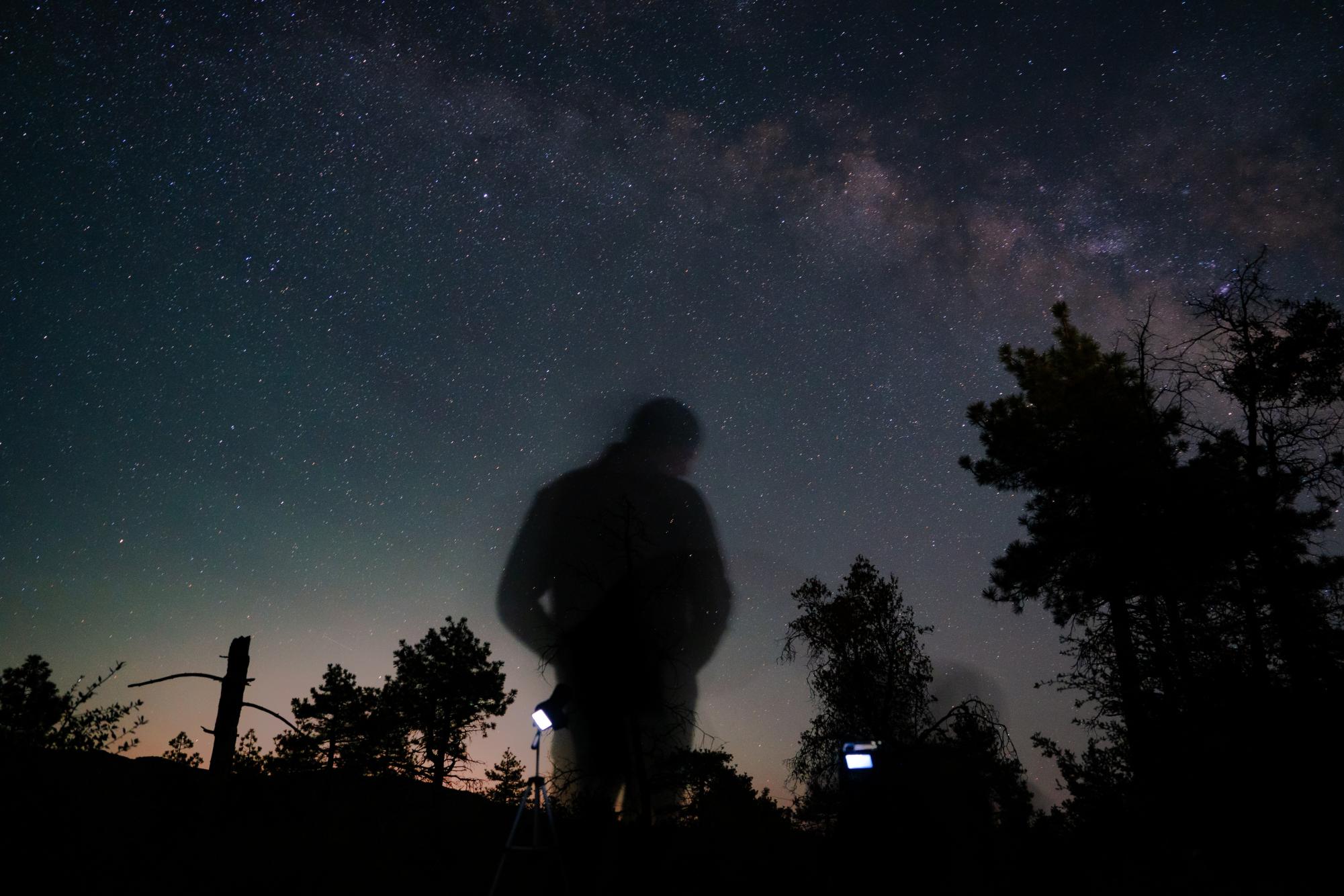The Northern Lights, more scientifically known as the aurora borealis, is observable in the “auroral zone” about 1,550 miles (2,500 kilometers) from the North Pole. However, photos of the northern lights from Southern California — which is double the distance of the auroral zone — emerged on the internet, sending UC San Diego students on a hunt to catch this phenomenon.
How was this possible?
A geomagnetic storm forms due to a disturbance in Earth’s magnetosphere by solar winds. This energy is carried by solar flares, which are large bursts of magnetic energy from the Sun. Solar flares, which contain plasma subatomic particles such as electrons, protons, and heavier particles, are powerful and can last anywhere from minutes to hours. This high burst of energy accelerates and transports these subatomic particles across space.
Solar flares are detectable due to photon emissions, and therefore recordable on X-rays. The transition into solar winds occurs when the released plasma escapes the Sun’s atmosphere, consequently allowing protons and electrons to reach Earth’s magnetosphere. Geomagnetic storms are brought about due to high solar winds, the phenomenon that we experienced recently.
Planets with auroras, such as Earth, have magnetic fields and atmospheres. Auroras are produced when electrons interact with atoms and molecules in the atmosphere while flowing along Earth’s magnetic field. Solar winds work against the magnetic field, increasing the magnetospheric electron flow and geomagnetic activity. The aurora turns brighter and increases the auroral zone.
This event that occurred recently is one of the strongest in 20 years. However, this may be the calm before the storm, pun intended. Although this solar wind has led to pretty Northern Lights further from the auroral zone, the National Oceanic and Atmospheric Administration’s Space Weather Prediction Center states that it is not something to be celebrated. Reaching level 5 on the 5-point scale of geomagnetic activity, the SWPC categorizes this event as an “extreme event,” and the severity of these events will continue to grow.
Since the storm on May 8, there have been multiple explosive events detected by space and land telescopes. These include coronal mass ejections — large clouds of plasma and magnetic fields that are ejected from the Sun and travel up to 500 km per second, peaking every 11 years in a solar cycle. The strength from these peaks is powerful enough to disrupt Earth’s geomagnetic field when they are directed toward Earth. This storm has posed threats to global infrastructure, including grid and satellite operators. Farmers experienced global positioning system malfunctions, which affected their ground seeding procedure, land mapping, and irrigation systems. The heating disrupts radio signal paths, leading to faults in GPS positioning. Even the distant Hubble Space Telescope has been experiencing delays in orbital decays, almost doubling the time required to orbit the Earth. Extra energy in the atmosphere introduces more ions and active particles, which increases the air density and therefore drags satellites, especially in orbital paths closer to Earth.
Many travel far and wide to see the northern lights; one could never dream of catching such an event here in San Diego. The occurrence of the recent geomagnetic storm can seem like a blessing when it’s more of a global concern. It is important that we take precautions to protect our infrastructure. However, since this event is unavoidable due to the nature of solar cycles, we should also take the time to appreciate the iridescent lights in the sky.









